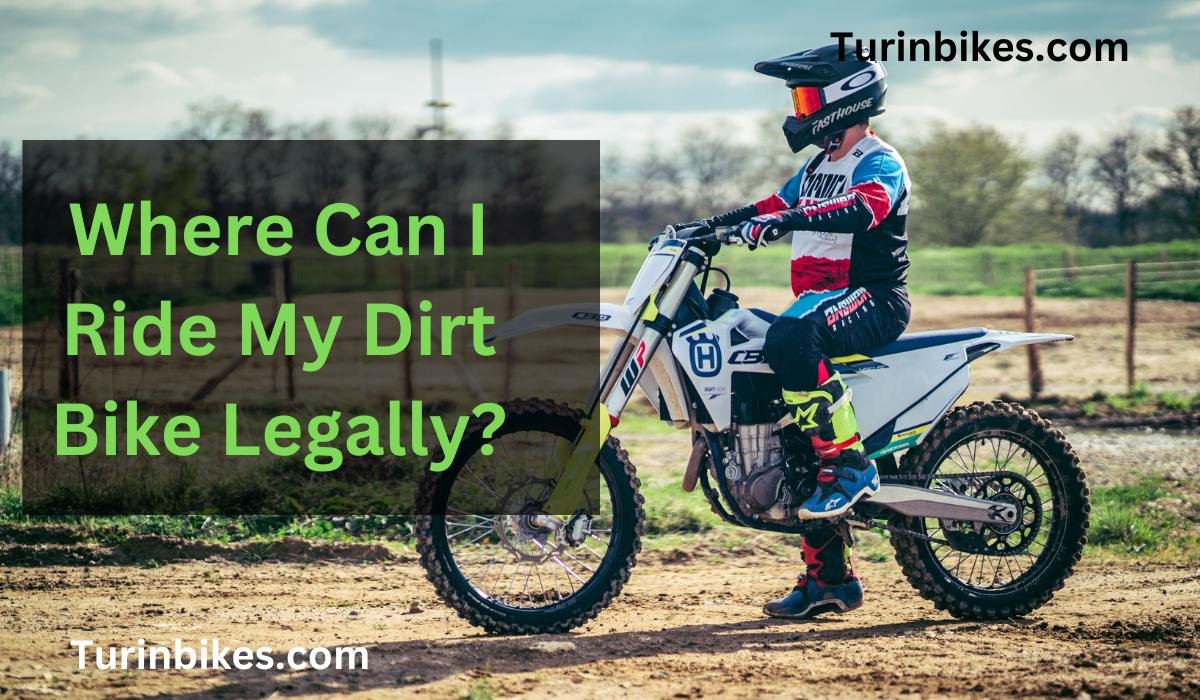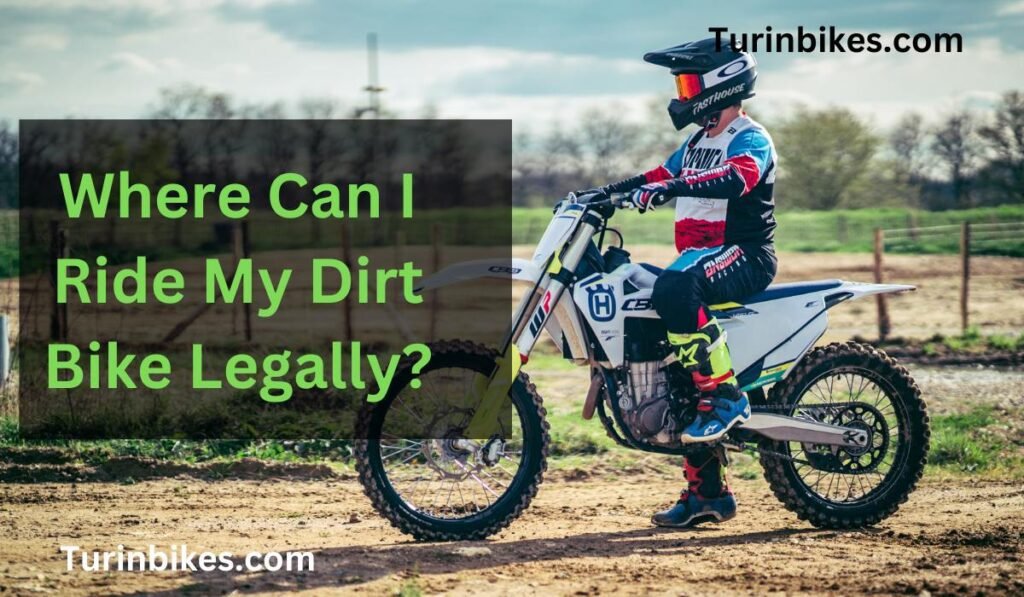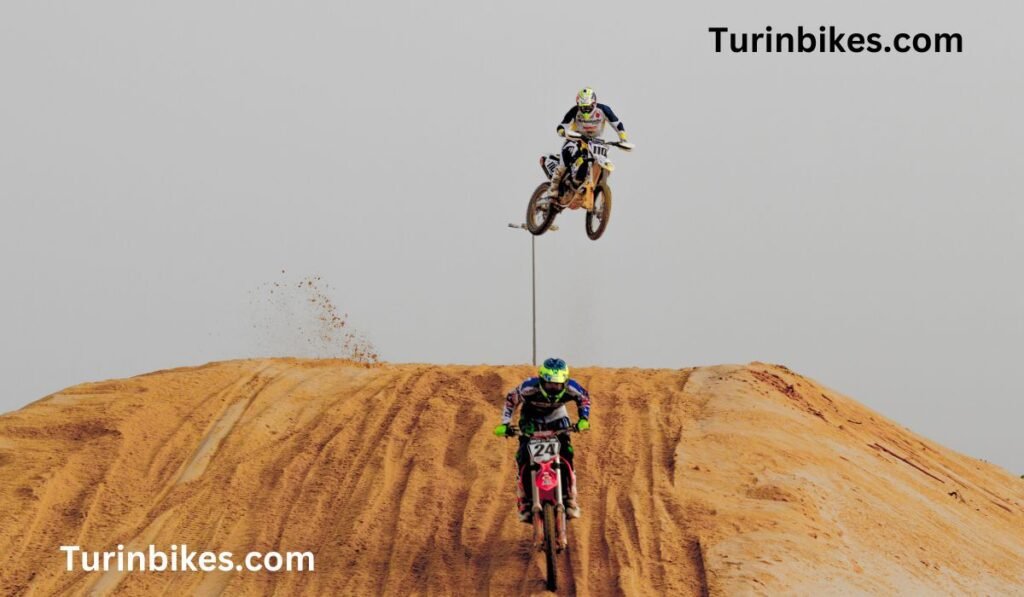
Dirt biking is an exhilarating adventure that many motorcycle enthusiasts crave! But here’s the burning question: where can I ride my dirt bike legally? Navigating the world of off-road terrains, from ATV trails to dual sport tracks, can be a maze. This is not about just finding the perfect place to ride; it’s about ensuring you’re revving up your engine in a spot that welcomes your two-wheeled beast. Whether you’re a seasoned rider or someone who’s just unpacked their brand-new motorcycle, understanding the legal landscape is crucial. Dive into this guide as we throttle through the best and legal places to unleash your dirt bike’s potential. Let’s gear up and hit the trail responsibly!
The Basics of Dirt Bike Laws
- General Regulations: Every region has its set of rules for dirt biking. These can include age restrictions, helmet requirements, and noise limits. Always familiarize yourself with these before hitting the trails.
- Local Laws Matter: Different areas have different rules. Whether it’s a city, state, or country, always check the specific dirt bike laws for the place you’re in.
- Safety First: Many regulations, like wearing helmets or protective gear, are there to ensure your safety. Don’t see them as restrictions but as measures to keep you safe while enjoying the sport.
- Environmental Responsibility: Some areas might be off-limits to protect local flora and fauna. Respecting these boundaries ensures that we preserve nature while enjoying our rides.
- Community Relations: Riding in unauthorized areas or flouting rules can strain relationships with local residents or other outdoor enthusiasts. Always be respectful and considerate.
- Consequences of Not Adhering: Ignoring laws can lead to accidents, legal consequences, and even the closure of popular riding spots. It’s crucial for the longevity of the sport to adhere to regulations.
- Promote Responsible Riding: By following the rules and promoting responsible riding, we can encourage authorities to provide more spaces for dirt biking and ensure the sport’s growth.

Where Can I Ride My Dirt Bike Legally Near Me?
Private Property: One of the safest and most straightforward places to ride your dirt bike is on private property. You can get owner’s permission and start free to rev up and explore. You don’t need any motorcycle license, and won’t have to worry about breaking public road regulations. Plus, it’s a great way to practice if you’re new to dirt bike riding.
Public Motocross Tracks: These are specially designed areas for dirt bikers to test their skills. Not only are they legal, but they also offer a controlled environment, making them another great place for beginners and pros alike. Remember, some tracks might require a fee or membership.
National Forests: Many national forests have designated dirt bike trails. Riding amidst nature offers a unique experience. However, ensure you stick to marked trails, as straying can harm the environment and might be illegal.
BLM Land: The Bureau of Land Management oversees vast stretches where off-road dirt biking is permitted. Just ensure you’re aware of the specific areas where dirt bikes can be legally ridden.
State Vehicle Recreation Areas: These areas are specifically set up for off-road use, including dirt bikes. They often have trails catering to all skill levels, from beginners to seasoned riders.
Campgrounds: Some campgrounds, especially those in more remote areas, have adjacent dirt bike trails. It’s a fantastic way to combine a family outing with your passion for biking.
Sand Dunes: For those seeking a challenge, sand dunes offer a unique terrain. Riding here requires skill, but the thrill is unmatched. Always check if dirt bike riding is permitted, as some dunes are protected areas.
Converted Railroad Tracks: Old, unused railroad tracks are sometimes converted into trails. They offer a flat, straight path, perfect for those looking to ride dirt bikes without too many technical challenges.
Beaches: Some beaches allow dirt bikes, especially during off-peak seasons. Riding with the waves crashing beside you is an experience like no other. However, always check local regulations.
Backyard Courses: If you have a spacious backyard, you can set up a mini-course. It’s perfect for kids or adults looking to practice in a controlled environment.
Private Roads: Some private roads, especially those in rural areas, allow dirt bikes. Ensure you have the necessary permissions and that your bike doesn’t disturb the locals.
Off-season Ski Hills: When the snow melts, some ski hills open their slopes to dirt bikers. The steep inclines offer a unique challenge.
Converted Skate Parks: While rare, some skate parks, when not busy, might allow dirt bikes. It’s a fun way to practice jumps and tricks in a safe environment.
Remember, wherever you decide to ride, always ensure you’re following local regulations, respecting the environment, and prioritizing safety. Riding legally not only protects you but also ensures the longevity and reputation of the sport.
Safety First: Before venturing out with your dirt bike on the road, it’s essential to emphasize safety. Riding dirt bikes on public terrains requires keen awareness and adherence to guidelines. Some places you simply can’t ride. Prioritizing safety ensures not only your well-being but also a harmonious environment for all. Equip yourself with the right gear, and always be cautious.

Places You Should Never Ride a Dirt Bike:
- Public Roads: While it might be tempting, it’s illegal to ride a dirt bike on most public roads. Ensure you’re familiar with local laws.
- Busy Streets: Even if it’s legal to ride in some areas, busy streets are not ideal. The risk is high, and dirt bikes are not street-legal in many jurisdictions.
- Restricted Trails: Not all dirt bike trails near you are open for use. Some might be private or protected lands.
- Pedestrian Walkways: These are designed for foot traffic, not for riding off-road vehicles. It’s not only dangerous but also often illegal to ride here.
- Parks and Recreational Areas: Unless specified, many parks prohibit motorized vehicles, including dirt bikes.
- Sidewalks: Remember, dirt bikes cannot be ridden on sidewalks. They’re meant for pedestrians.
- Conservation Areas: These are protected for a reason. Riding here can damage the ecosystem and is typically illegal.
- School Zones and Playgrounds: Safety first! It’s not only illegal to ride here, but it also poses a significant risk to children and other pedestrians.
Do You Need a License to Ride a Dirt Bike?
Usually, if you want to ride your dirt bike on a busy road or street with other cars, you or an adult need a driver’s license. This is like a permission slip from the city that says it’s okay to ride on the roads. But if your dirt bike isn’t made for the street, or if you don’t have that special permission, you can’t ride there. It’s always good to check with a grown-up or look up your city’s rules to know for sure. Riding on trails or in your backyard is different, and you usually don’t need a license for that. So, it’s good to learn the rules to keep your dirt bike fun safe and trouble-free!
Meet Sachin Kumar, an avid cyclist and bike enthusiast with a passion for two-wheeled adventures. At our Turinbikes site, Sachin shares expert insights, thrilling ride experiences, and tips for fellow bike lovers.






